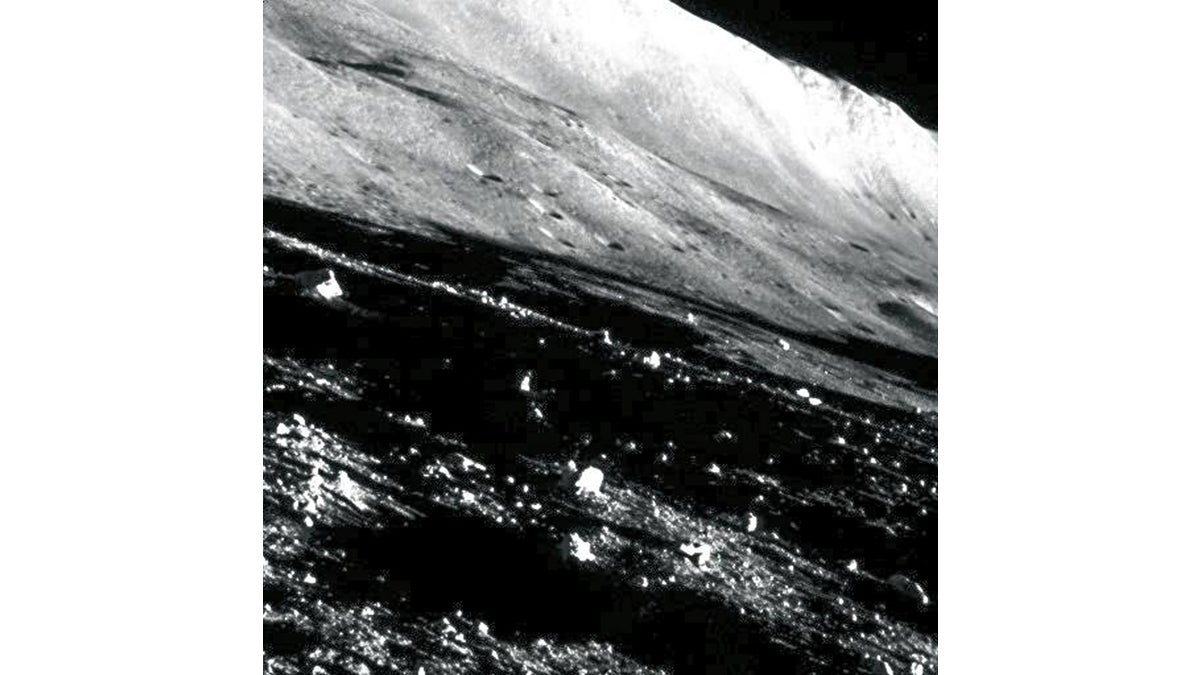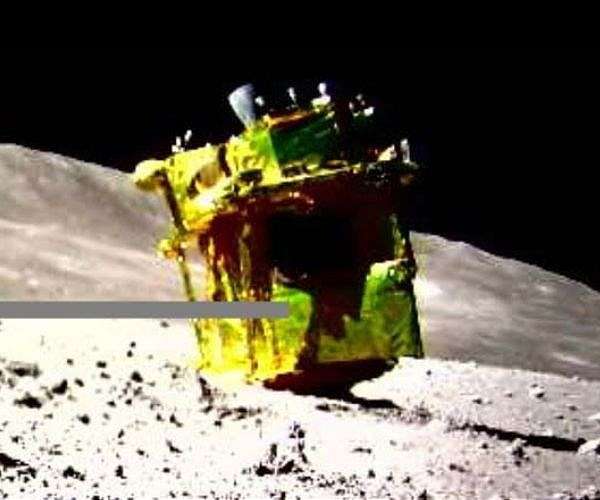FighterJock
ACCESS: Above Top Secret
- Joined
- 29 October 2007
- Messages
- 5,603
- Reaction score
- 5,932
I did not realise that SLIM carried rovers Michel Van, Interesting.
it carry two rovers. who were drop short before landingI did not realise that SLIM carried rovers Michel Van, Interesting.
We succeeded in establishing communication with SLIM last night and have resumed operations!
We immediately started scientific observations with MBC, and have successfully obtained first light for 10-band observation.
The figure below shows a toy poodle observed using the first light multi-band observation.

Images taken by the Multi-Band Camera (MBC) on board the Smart Lander for Investigating Moon (SLIM)
January 25, 2024 (JST)
Japan Aerospace Exploration Agency
The University of Aizu
Ritsumeikan University
The Japan Aerospace Exploration Agency (JAXA), along with the University of Aizu and Ritsumeikan University, has released images captured by the Multi-Band Camera (MBC) onboard the Smart Lander for Investigating Moon (SLIM).
After the moon landing and before shutting down of the spacecraft power, MBC released the locking mechanism to withstand the impact upon launch and landing, then conducted scanning operations. The scanning is performed by moving the adjustable mirror and is for preliminary examination of the rocks of scientific interest that are situated around the SLIM landing site. Figure 1 shows a landscape image created by synthesizing 257 low-resolution monochrome pictures. Based on this landscape image, the team is sorting out rocks of interest, assigning a nickname to each of them, with intent of communicating their relative sizes smoothly by the names. Preparation is underway to promptly conduct 10-band high-resolution spectroscopic observations once the solar illumination condition improves and SLIM recovers by the power generated by the solar array.
We would like to congratulate @SLIM_JAXA on the resumption of spacecraft operations! The news of the world’s first successful pinpoint lunar landing, as well as recovery from challenges faced during landing, has been encouraging for us to see. (1/2)
Our Mission 2 lander is named RESILIENCE, echoing our unwavering commitment to reboot and revive the lunar landing after Mission 1. Preparations for M2 continue as we utilize the knowledge gained from M1. (2/2)
#ispace #lunarquest #HAKUTO_R #Moon

It was the second attempt. It was launched on the sixteenth.Watched it on the BBC News Channel yesterday GeminiProgram, I did not know that it was it's sixteenth attempt.

Solids...Kairos rocket first launch went not well
View: https://twitter.com/conexionspacial/status/1767737569582698887
i guess that Top cover with igniter failed 5 sec after launch
or they used composite materials for Soild motor hull
View: https://www.youtube.com/watch?v=AErsimi1X2c
Just what the world needs...This is perfect for shuttle diplomacy--China can teach them how to make good rockets and the Japanese can teach them how to make good cars.
This is perfect for shuttle diplomacy--China can teach them how to make good rockets and the Japanese can teach them how to make good cars.
Sorry, but considering flight history of H-IIA/B and M-V/Epsilon, and the fact that recent failures with H-3 (which then succeeded) and Kairos are anything that could be expected from the maiden flights, fortunately there doesn't seem to be any need for the Japanese to teach Chinese how to make cars.Just what the world needs...
. The Resolve instrument is blocked by its launch cover, a gate valve released with non-explosive actuators. If this cover cannot be opened, the effective area below 2 keV will be effectively zero, while the majority of the signal in amplitude would be coming from there in a nominal operations situation. It is emphasized most Level-1 science requirements would still be fulfilled with longer exposure by employing the X rays that filter through (factor of 2 reduction at the 5-6 keV hump):

Toyota's 'Lunar Cruiser' to join NASA-led moon mission
Move comes amid plans for lunar trips that include Japanese astronautsasia.nikkei.com
Toyota is working with Mitsubishi Heavy Industries and the Japan Aerospace Exploration Agency (JAXA) to develop the Lunar Cruiser by 2031. The vehicle will function like a "camping car on the moon," allowing astronauts to stay inside without spacesuits due to its controlled air pressure. The second Japanese astronaut to land on the moon, expected in 2032, will operate the vehicle.
The Lunar Cruiser, which is expected to be able to carry two astronauts up to 20 kilometers a day, will work on tasks such as surveying soil and underground resources in areas near the moon's south pole over a period of about a month.
The developers are aiming for an operating life of about 10 years, with a total travel distance of around 100,000 kilometers. Toyota is providing technology for batteries that generate hydrogen using sunlight and for tires that can run on fine lunar sand.

Galaxy Express. Basically an Atlas III core (later Atlas V) with a LNG upper stage in place of centaur.I thought Japan was going to get RD-180s a decade or so ago—but with an LV with less payload than Atlas V…maybe I dreamed it…over at NSF I think…

[From the Akatsuki team](1/2)
ISAS has lost contact with Akatsuki after an operation in late April due to an extended period of low attitude stability control mode, and is currently making efforts to reestablish communication with the spacecraft.
[From the Akatsuki team](2/2)
We will inform you about future plans once they are fixed. Thank you for your warm support.
